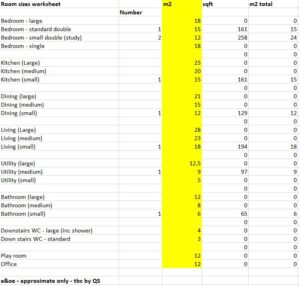At the start of every project, our clients come to us with an idea, and our first question is always focused on understanding what they truly desire. Typically, we are presented with a list of requirements or visual references that form the basis of the project brief.
Our responsibility is to transform this initial list into a comprehensive architectural brief that captures the essence of our clients’ wants, needs, and aspirations for their home. We differentiate between “hard needs,” such as the number of bedrooms, and “soft needs,” which refer to how they want the space to look and feel.
During this process, we take the time to understand our clients’ lifestyles, priorities, and preferred ways of using the space. This understanding ensures that we are all aligned and working towards the same objective.
Creating a well-crafted brief is the first step in telling our clients’ stories. By taking the time to create a brief that accurately reflects our clients’ desires, we can design a home that is truly one-of-a-kind and tailored to their unique needs. Our homes are not off-the-shelf solutions, but rather bespoke creations that fit our clients perfectly.
Therefore, this package is to meet at your site and to formulate, write and agree the brief. This is the key starting point to any successful architectural project.
This ‘Brief’ also starts the process of financial feasibility, where areas are put against rooms and approximate costs (based on the RIAI Cost Guidelines) are calculated:

The brief also includes:
Separate appointments for professionals such as Structural Engineer, QS, PSDP etc…
Statutory client responsibilities for planning, Building Regulations (Design/Assigned Certifier roles) and Safety, Health & Welfare (construction) regulations are addressed
Clients interest in site, site boundaries etc…
Building’s performance criteria; ie Passivhaus BREEAM etc…
Choice of materials ie performance criteria,sustainability etc…
Site availability/restrictions/access details
Clients budget, approximate cost per m2, availability of grants/subsidies etc…
Protected status of building or NIAH listing (or not)
Current BER rating and BER target
Environmental standards for daylight, ventilation, airtightness
Project time-scale
This Architectural Brief is essential and is a key component in the RIAI ‘Good Practice Guide’.
Note that this ‘Architectural Brief Service’ will form the basis of the quotation for services. No designs are drawings are included in this meeting. The cost of this meeting is deducted when the project proceeds further.
Note also that this ervice also requires that TRAVEL EXPENSES are added.
Read More …
Like this:
Like Loading...








You must be logged in to post a comment.